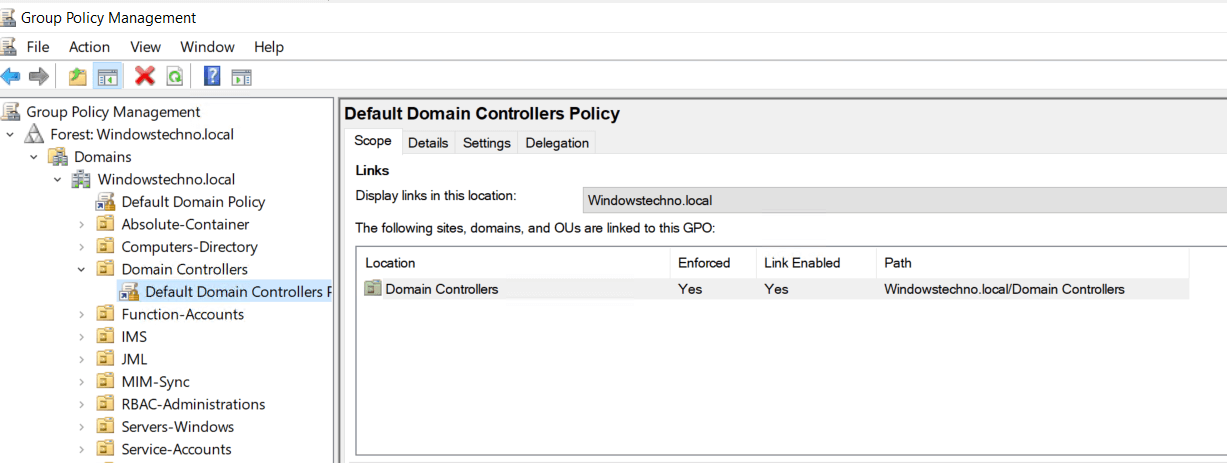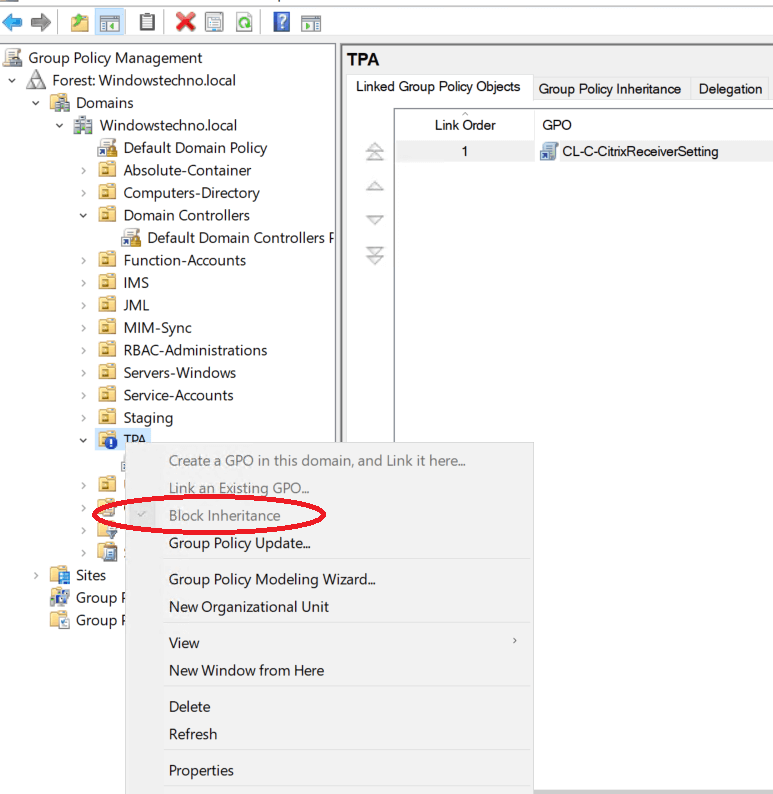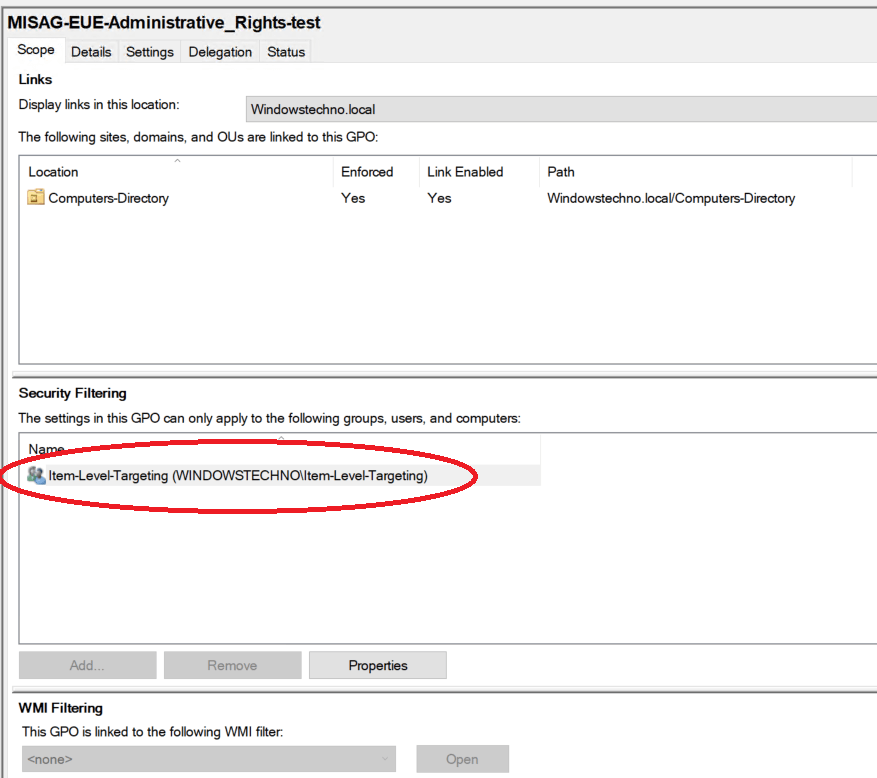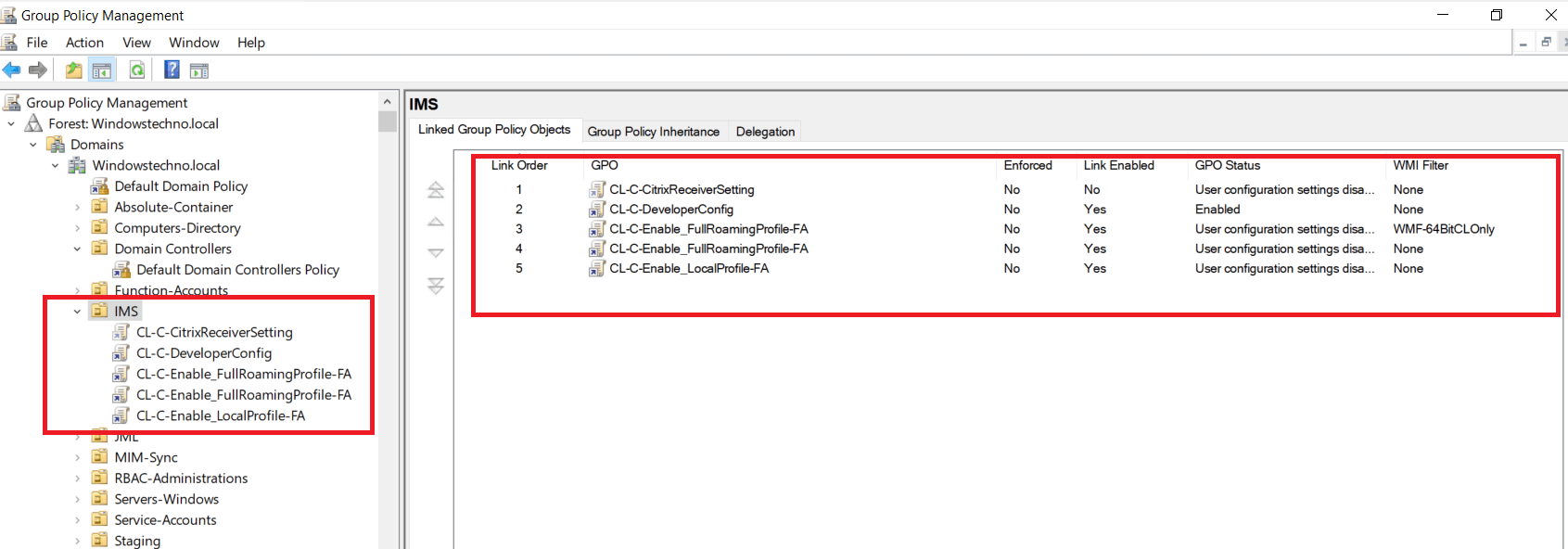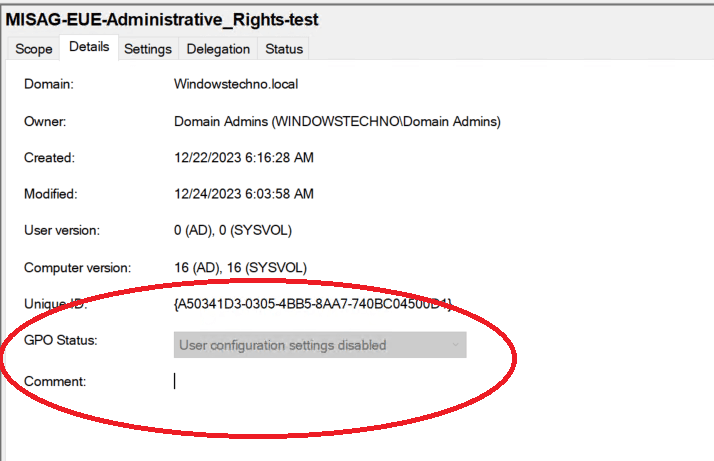Group Policy Best Practices
Group Policy Best Practices
The following should be considered for designing group policies.
- Do not modify default domain and domain controller policies– please use default policies for password related policy only. for baseline settings, please use another group policy and link to domain and domain controller OU.
-
Organize your OU structure: A good OU structure makes it easier to manage and troubleshoot multiple group policies. As a general rule, avoid mixing different types of Active Directory objects (like users and computers) in the same OU. Instead, separate users and computers in separate OUs, and you can even organize these OUs by department.
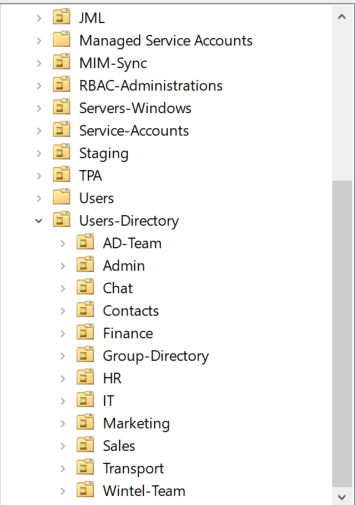
-
Avoid blocking policy inheritance and policy enforcement: Implement straightforward policies for easy troubleshooting-Please minimize block inheritance, No override and filtering. so, it is easier to find out the source of specific setting.
- Use GPO naming convention– Please do not give any name to any group policy, name should be on group policy setting and scope. e.g if you are creating the group policy for client machines and applying to specific computers, please follow the below gpo naming convention. This is one of example for client related GPO naming convention.
<CL><C><Baseline><FA>
Example – CL-C-BaselineConfig-FA
CL– Client machines
U– User Settings
C– Computer settings
FA/FD/WMI– Filter apply and denied.
ST– Site
SVR– Server
DC-Domain Controller
- GPO setting name-please give the name that indicate the GPO configuration. if GPO is related to computer baseline, then use Baseline Config in GPO name.
- FA/FD/WMI– Filter apply or Filter denied. If you are going to apply the GPO to specific computers or users, then please use the FA in end of group policy name that will indicate the GPO is filter applied that means its only applying to set of users instead all.
- Minimize linking– Because there may be a chance deleting the original one with seeing who else are using this GPO. Minimizing linking for simplicity.
- Disable unused part of a group policy object-Group Policy has two components- Computer and User configurations. Only settings that are Not configured, then avoid processing those settings by disabling the unused configuration.
- Minimize number of GPO’s applied to user or computer-It is better to include many settings in single GPO instead of creating multiple GPO. Microsoft suggests that one GPO with 100 settings will process faster than 100 GPO’s each with one setting.
- Avoid Linking GPOs between Domains-Linking GPO across domains has an impact to processing of policies which result in slower user logons.
- Minimize filtering-To keep simple your environment, try to minimize filtering.
-
Backup group policies: Group policies are a vital component of your Active Directory infrastructure and should be treated as such. Therefore, you should perform regular backups of the policies as part of your disaster recovery plans. You can use third-party tools or create a custom PowerShell script using the Backup-GPO command.
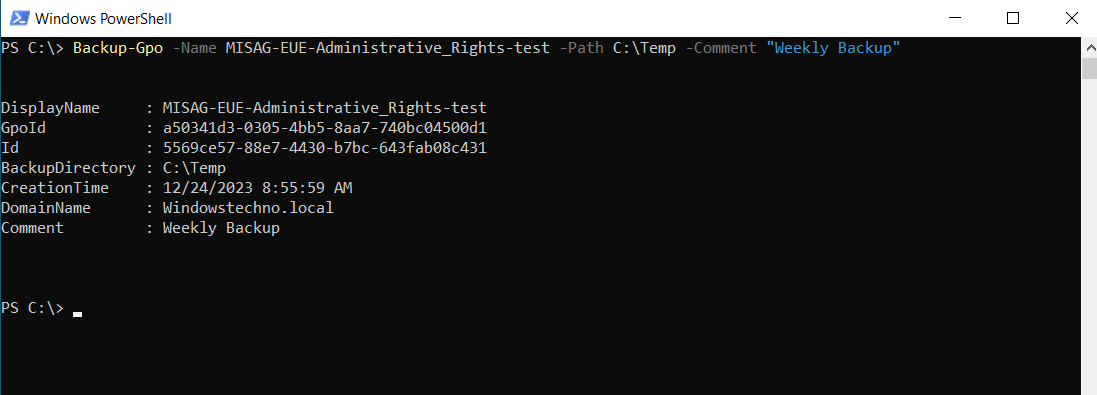
Note: If you have a greater number of GPOs for a container, whatever GPO is on top will applied first. If you want, you can move GPO’s up and down.
Note: If there is conflict between two GPOs of same container, the last applied GPO will be effective. i.e., the bottom one will be effect.
Group Policy FAQ
What does GPO stand for?
GPO stand for group policy object.
What is Group Policy?
Group Policy is an Active Directory service that manages configurations for users and computers in the domain.
How do I open the Group Policy Managment Console?
Open the Start Menu, search for “Group Policy Management” and open the Group Policy Management Console.
What is an example of Group Policy?
Examples of group policies include configuring operating system security, adding firewall rules, or managing applications like Microsoft Office or a browser. Group Policies also install software and run startup and login scripts. Group Policy is a core service that requires planning and care to ensure an optimal environment.
What is the Refresh interval for Group Policy?
Refresh interval time play a major role to update or refresh the group policy for DCs as well clients. Refresh interval means how long a domain controller can get the update from another domain controller respective to group policy and same happens between domain controller to client machines after a set of time duration.
Example, suppose we made the changes in group policy and that is being applied to users. Group policy changes will not be applying immediately, we have to wait for group policy refresh as default its set to 90 minutes. Group policy will automatically be applying or refresh settings after 90 minutes of refresh interval.
So, that’s all in this blog. I will meet you soon with next stuff. a nice day!!!
Guys please don’t forget to like and share the post. Also join our WindowsTechno Community and where you can post your queries/doubts and our experts will address them.
You can also share the feedback on below windows techno email id.
If you have any questions feel free to contact us on admin@windowstechno.com also follow us on facebook@windowstechno to get updates about new blog posts.

